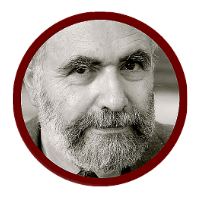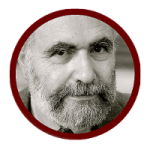Europe unraveling, Islam taking over.
5. The End of the Dream
To the degree that Israel’s popularity had been an important factor in Europe’s postwar embrace of its Jews, the growing rejection of Israel undermined the Jewish image and standing. According to a 2011 study on “intolerance, prejudice, and discrimination in Europe” by the Friedrich Ebert Foundation (linked to Germany’s Social Democratic party), 63 percent of Poles and 48 percent of Germans believe that Israel is conducting a genocidal war against the Palestinians aimed at their “obliteration.” The same study found 55 percent of Poles, 41 percent of Dutch, 37 percent of British, and 37 percent of Germans in agreement with the following statement: “Considering Israel’s policy, I can understand why people do not like Jews.”
Still, the Gaullist-inspired reversal of attitude toward Israel would probably not have been strong enough on its own to resurrect old-fashioned European anti-Semitism. It was powerfully abetted by two additional developments.
First, the half-century of Europe’s virtuous cycle started to unravel. From the 1990s on, one could sense growing discomfort with the top-heavy, anti-democratic, and chaotic governance of the European Union. The successive treaties of Maastricht (1992), Amsterdam (1997), Nice (2001), and Lisbon (2007), clumsily mixing heavy-handed overregulation with a free-market economic model, were ratified by national parliaments that were rightly seen as subservient to the unelected European Commission in Brussels, rather than by referendum as most citizens in most countries would have preferred. An exception was the 2005 European Constitutional Treaty, a comprehensive summing-up of Europe’s new institutions; rejected by both France and the Netherlands, the two countries that submitted it to a referendum, it had to be quietly dropped.
Disillusionment with the European project gathered strength after the launching of the euro in 2002, a deflationary “single European currency” that undermined whatever stability in the world economy had been provided by the American dollar, and that was also totally incompatible with the welfare programs ingrained in the culture of many EU members. Not only did the euro fail to sustain prosperity on the Continent—with the exception of Germany, which in time undertook to lower wages and cut welfare payments—but after 2008 it led to a series of national bankruptcies or near-bankruptcies from Ireland to Greece and from Spain and Italy to France.
And where did the Jewish community fit in this picture? Jews had benefited from their identification with the European project as long as “Europe” was a warrant for prosperity and progress. As “Europe” came increasingly to connote disruption, stagnation, and poverty, they were increasingly held in suspicion—guilty by association with a false dream, as it were, and all the more so since many of the charges against the EU (undemocratic, ruled by an opaque clique with no concern for ordinary Europeans) dovetailed with classic conspiracy theories about the Jews.
The second, very large factor working against the Jewish community arose from an abrupt shift in Europe’s demography. In the early postwar decades, population growth had contributed to the era of good feeling. From the 1970s on, everything changed. The European birthrate plummeted, just as immigration from Muslim countries was attaining unprecedented heights. Today, Muslim immigrants and their children amount to 10 percent or more of the population in major countries like Germany and France as well as in Sweden, Belgium, the Netherlands, and Switzerland. In the United Kingdom and Denmark, Muslims comprise upward of 5 percent of the population.
Estimates of actual figures vary since most European countries do not allow ethnic or religious census or registration, immigrants are reluctant to give accurate information about themselves or their families, and Muslims in particular resort to taqia (dissimulation about their identity and religious practice) when and as they deem it necessary. What is undeniable is that the proportion of Muslims in European society is rapidly increasing, either naturally or by further immigration or by conversion of non-Muslims, and that the proportion of Muslims in the youngest age brackets is much higher than the proportion overall.
The entire French population, including overseas territories, stands currently at 67 million. Some seven to ten million of these—10 to 15 percent—are non-European, mostly Muslim immigrants or children of immigrants. Among younger cohorts, the figures are much higher: 20 to 25 percent of those under twenty-five are of non-European and Muslim origin. Within the next half-century, unless the ethnic French embark on a new baby boom of their own, or immigration stops, or immigrant fertility falls dramatically, France will become a half-Islamic and half-Islamized nation.
This is quite problematic in itself, and all the more problematic to the degree that Islam overlaps with radical Islam: a philosophy and a way of life that reject democracy, the open society, and, needless to add, Jews. Islamists see Europe as an Islamic-society-in-the-making; attempts by ethnic Europeans or by democratically-minded Muslims to reverse that process, or to reconcile Islam with European and democratic values, are regarded prima facie as “Islamophobia”: i.e., a Western war on Islam. Indeed, in the radical Islamic view, any objection or opposition to Islam or to the transformation of Western secular democracy into Islamic theocracy vindicates jihadism as a legitimate form of self-defense.
In Islam: The French Test, the veteran French journalist Elisabeth Schemla, formerly an editor at the leftwing magazine Le Nouvel Observateur, conservatively estimates Muslims in France at seven million. In her judgment, based on survey data, one third of that community—fully two million people—already embrace radical Islam, and the proportion is steadily growing. She quotes Marwan Muhamad, secretary-general of the ominously named Committee against Islamophobia in France (CCIF): “By what right can anyone say that, 30 years from now, France will not be a Muslim country? . . . No one in this country can wrest from us . . . our right to hope for an entire society faithful to Islam. . . . No one in this country can decide French national identity for us.” The Committee’s logo features the capital letters “CCIF” arranged so as to suggest an alternative reading: çaif, the Arabic word for sword.
Mohamed Merah, the murderer of Samuel Sandler’s son and grandchildren, started his killing spree last year by slaying a lone French soldier in Toulouse on March 11. Four days later he shot three more soldiers in the nearby town of Montauban: two died on the spot; the third, severely wounded, is now a quadriplegic. Merah selected his eight victims in order to “avenge” Islam, as he boasted shortly before being gunned down by security forces. Presumably the four soldiers, either of North African or West Indian origin, were guilty of betraying their Muslim brethren by joining an “enemy” army that has been fighting in Afghanistan, the Sahara, and the Sahel, and that defends the (by definition) Islamophobic French state. As for his Jewish victims, are not all Jews the enemies of Palestinians in particular and the worldwide Muslim umma in general?
Manuel Valls, the French interior minister, has warned that the growing radicalization of the Islamic milieu in France is producing “dozens of new Merahs” every year. And France is hardly alone: one need only recall the slaughter of the film director Theo Van Gogh in the Netherlands in 2004; the Madrid train bombings in the same year; the London suicide bombings in 2005; or the beheading in London this year of the British soldier Lee Rigby.
Islamist violence is not only a matter of murder or terror—often, as we have seen, directed at Jews. Most frequently it manifests itself in intimidation, taking the form of petty crime and racketeering, threatening behavior on trains and buses, or full-fledged rioting and looting. While not always openly Islamic in character, these acts primarily involve Muslim youths, as was the case in the French riots this year and earlier in 2005, and in this year’s Swedish riots. The implicit message they convey is clear enough: any perceived slight to the Muslim “nation within the nation” is liable to trigger mob violence or even urban warfare. They thereby strengthen the bargaining power of Muslim organizations, especially the radical ones, vis-à-vis the government and the political class.
End of Introduction
© Michel Gurfinkiel & MosaicMagazine, 2013
Michel Gurfinkiel is the Founder and President of the Jean-Jacques Rousseau Institute, a conservative think-thank in France, and a Shillman/Ginsburg Fellow at Middle East Forum.


